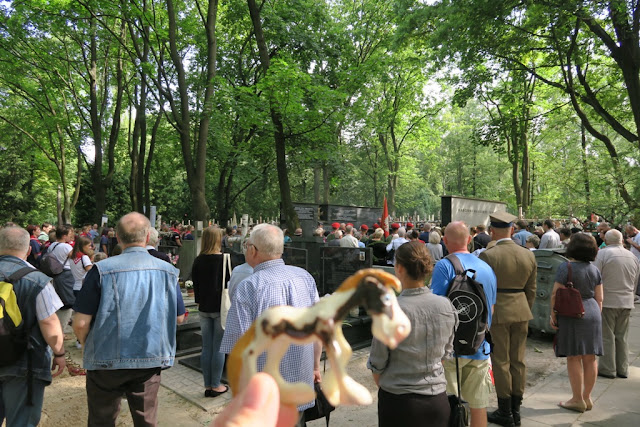For all those of you who are not acquainted with the Polish history, a little introduction. The Second World War has started on 1st September 1939, when German nazis have invaded Poland. For the consecutive five years, the people of Poland were tirelessly fighting to regain their freedom. Finally, in the summer of 1944, the Polish resistance Home Army has decided to start an uprising, aimed to liberate Warsaw from the German occupation. The Warsaw Uprising has started on 1st August 1944, at 5 PM. It lasted sixty three days and unfortunately was not successful.
Both the historians and the people in the streets are divided in their judgments about the Warsaw Uprising. Some say it was a suicidal act that has cost lives to many young men who could have been the future of the nation and resulted in a total destruction of the city. Others say, that it is better to die standing proudly than to live humiliated, bent on the knees.
No matter what opinion about the Warsaw Uprising they might have, the inhabitants of Warsaw pay every year tribute to those who offered their lives for their city. The phrase "We remember" can be found in different parts of the city.
The sign that incorporates "P" and "W" is called Kotwica ("anchor"). This is an acronym of "Poland Fighting" and a symbol of the Polish Underground State. On 1st August it is omnipresent in Warsaw. But a place where you are most likely to find it is the Powązki cementary. On 1st August you can meet there virtually everybody, starting with the youngest patriots.
Those a bit older often come with their scout teams.
Obviously, all types of military forces also send their representatives.
The crosses in the back are the tombs of those who perished during the Uprising.
The alleys and the monuments are filled with white and red, the colours of the Polish flag.
Just a few steps from here, you will meet a huge crowd gathered around the tombs of the soldiers of the Zośka battalion.
Just in the middle are again scouts - many of the young soldiers were members of the Gray Ranks, actively taking part in the Warsaw Uprising.
Battalion Zośka was decorated with Virtuti Militari, the highest military order in Poland.
The inhabitants of Warsaw have a special place in their hearts for these young people. You can judge it by the number of lights that are always standing there.
There is one more special thing about 1st August in Warsaw. At 5 PM, the "W" hour, whet the Uprising has began, the city literally stops. Whenever you would be on that moment, you will not miss this hour.
So "Glory to the Heroes" as they say here.











byłam w Muzeum Powstania Warszawskiego już dwukrotnie i przyznaję, że to w tym miejscu dowiedziałam się najwięcej o powstaniu, a nie na lekcjach historii. może kiedyś uda mi się odwiedzić stolicę w rocznicę tego pamiętnego wydarzenia.
ReplyDelete